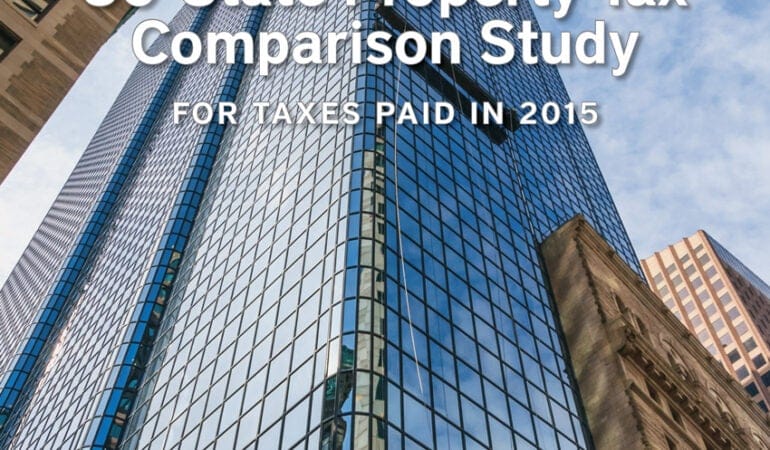
New Lincoln Institute Report
50-State Property Tax Comparison Study: For Taxes Paid in 2015
In partnership with the Minnesota Center for Fiscal Excellence
The Lincoln Institute of Land Policy has released the latest edition of its annual report on property tax rates in all 50 U.S. states, with a new analysis of how communities raise revenue to pay for basic public services.
The 50-State Property Tax Comparison Study, produced in partnership with the Minnesota Center for Fiscal Excellence, tracks the effective tax rate—the tax payment as a percentage of market value—for residential, commercial, industrial, and apartment properties in more than 100 U.S. cities.
For the first time, the report analyzes why tax rates vary from city to city, exploring factors such as the reliance on property taxes relative to other revenues such as the sales tax, the variation in property values, the differential treatment of residential and commercial property, and the level of local government spending. The report also explores the impact of property tax assessment limits, which constrain local governments and distort tax rates for owners of similarly valued properties.
“The property tax is a critical source of revenue for local government services, from education to public safety,” said Joan Youngman, chair of the Lincoln Institute’s Department of Valuation and Taxation. “This report provides a snapshot of property taxation across cities, one step toward a fuller picture of how communities meet their responsibility to serve their citizens.”
Bridgeport, Connecticut, continues to rank at the top for the property tax rate on the median-valued home—a reflection of its heavy reliance on the property tax (residents pay no local sales or income taxes). By contrast, Birmingham, Alabama, has the fourth-lowest property tax rate, but total local taxes are 27 percent higher than in Bridgeport once sales, income, and other local taxes are taken into account. Other cities with high property tax rates, such as Detroit (2nd highest) and Milwaukee (5th highest), have low property values, requiring relatively high tax rates to meet even the most basic public service needs.
New York City ranks at the top for property tax rates for apartments. Its ranking reflects the city’s high “classification ratio”—the extent to which it favors owner-occupied housing over other properties. In New York City, the tax rate on apartments is more than five times higher than on the median-valued home.
When it comes to commercial property, Detroit, New York, and Providence, Rhode Island, have the highest tax rates, with different contributing factors in each city. In Detroit, low property values require higher rates to fund services in the struggling city. In New York’s red-hot real estate market, policy makers have chosen to shield home owners by shifting the burden to commercial property. And in Providence, the city has historically relied heavily on the property tax, compared with other local revenues.
The report also analyzes the effect of assessment limits, which restrict the ability of cities to reassess properties to fully reflect increases in the market value. In Long Beach, California, for example, the owner of a newly purchased home pays 40 percent more than someone who has owned the same home for 14 years—the greatest disparity in the country. New York City ranks second with a 37 percent disparity, and Los Angeles ranks third at 35 percent.
The Lincoln Institute and the Minnesota Center for Fiscal Excellence have coproduced the 50-State Comparison Study for the last five years. The report released in June, based on 2015 data, is available at the Lincoln Institute subcenter Significant Features of the Property Tax, which offers detailed data on the property tax in 50 states and the District of Columbia.
The study can be used for further research on the dynamic impacts of property taxation, such as the extent to which commercial or industrial tax rates have an influence on locational decisions of businesses, or the relationship between tax rates and the proportion of untaxed or untaxable land in cities.
